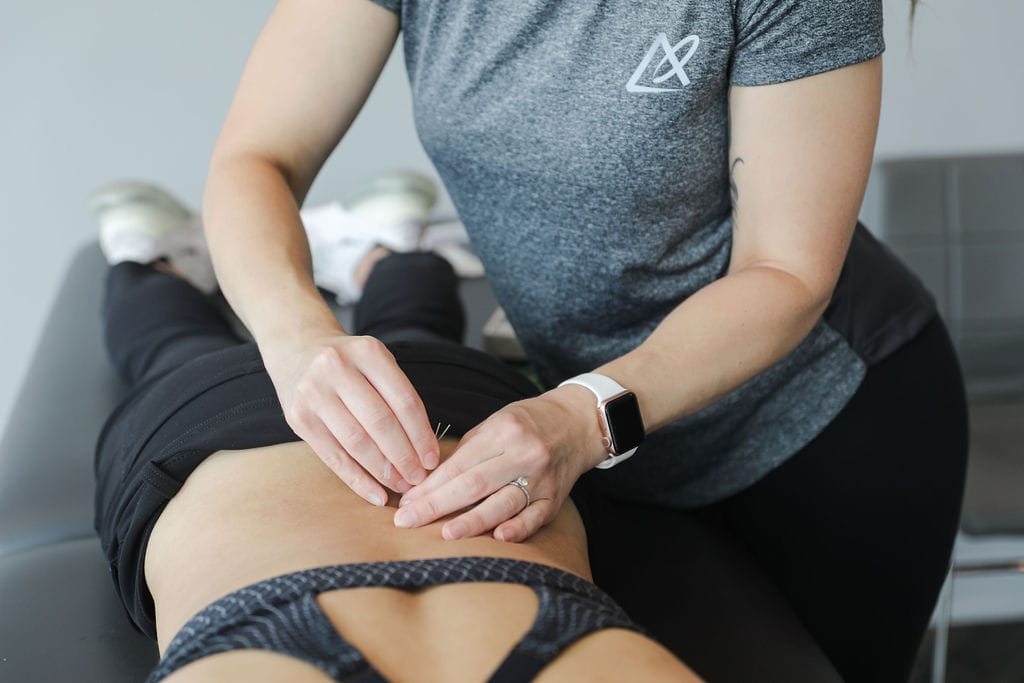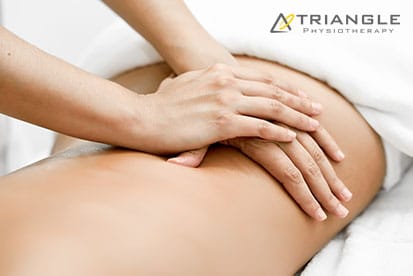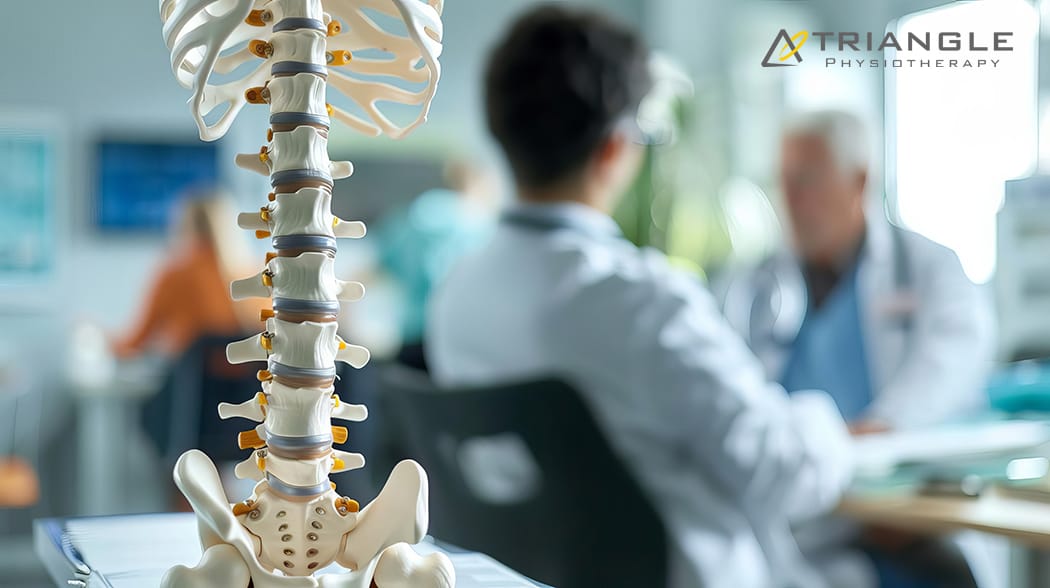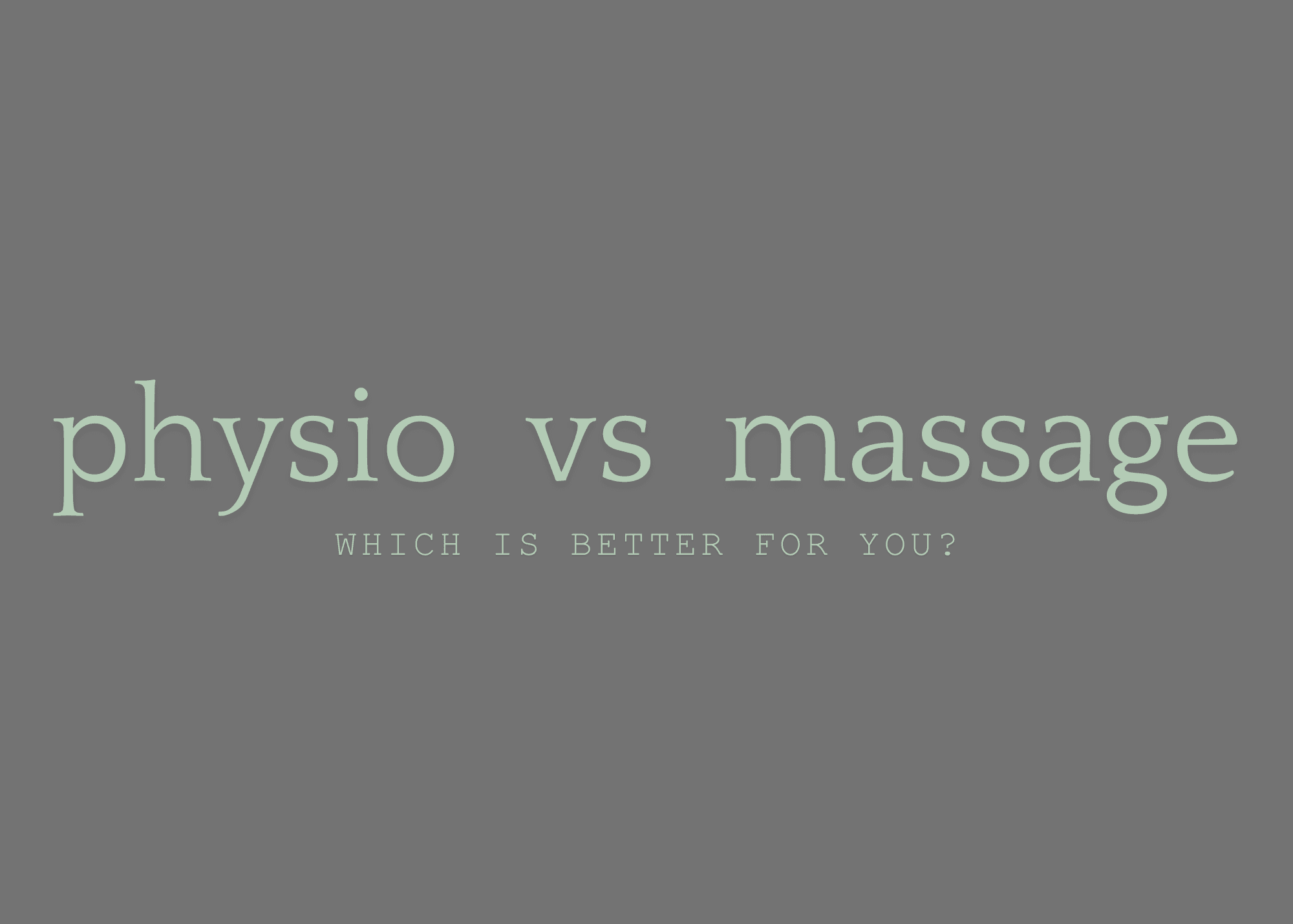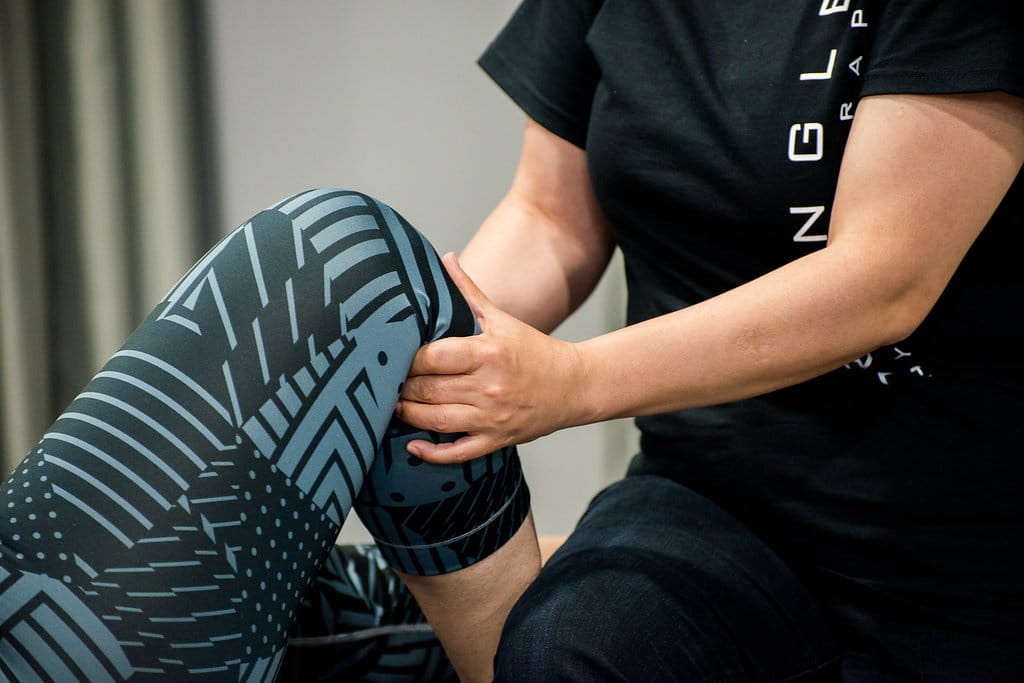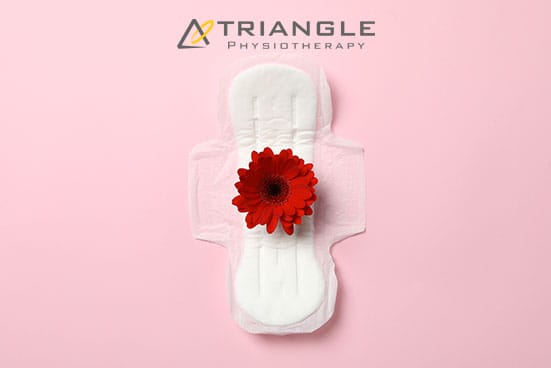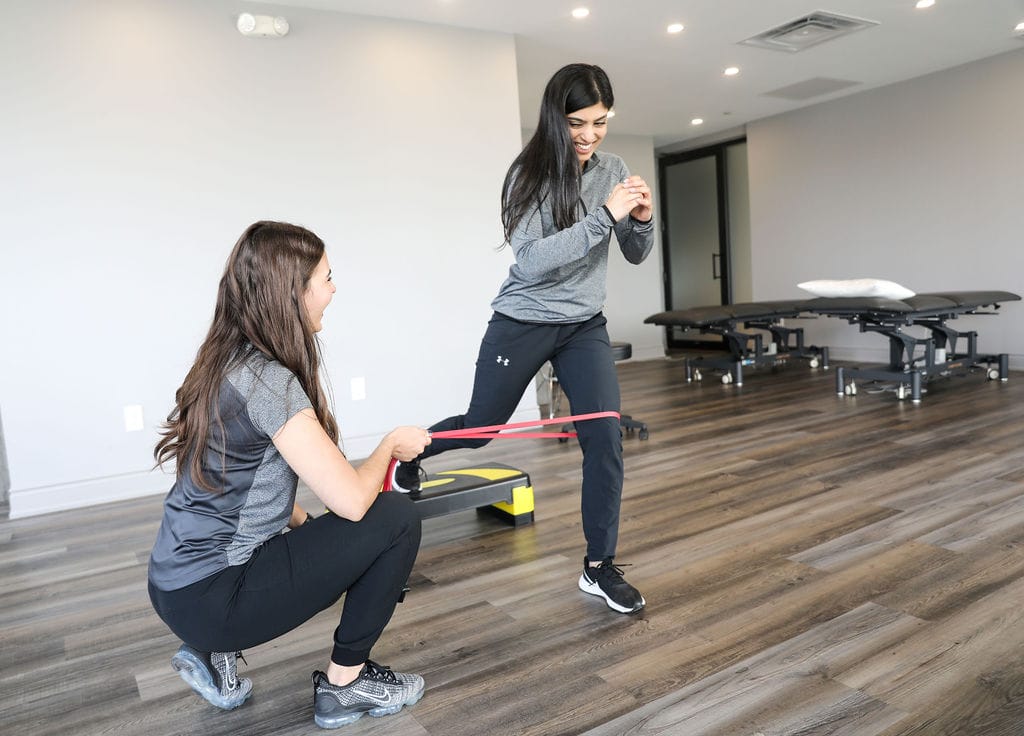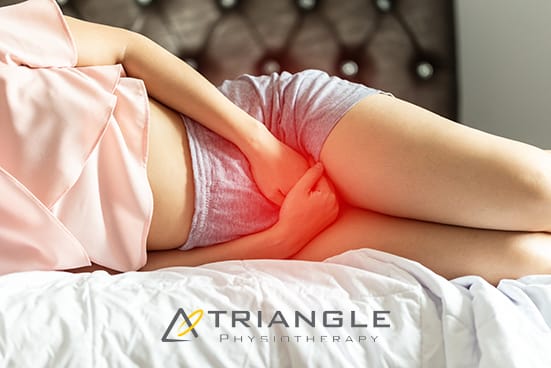Back pain is a common complaint affecting people of all ages and lifestyles. It can range from a mild, nagging ache to severe pain that hinders daily activities. Understanding the causes and treatments for back pain is crucial for maintaining a healthy and active lifestyle. One of the most effective treatments for back pain is physiotherapy, which offers a holistic approach to pain management and recovery.
Causes of Back Pain
- Poor Posture: Sitting or standing improperly for prolonged periods can strain the back muscles and spine.
- Injury: Accidents, falls, or sports injuries can cause acute back pain.
- Muscle Strain: Overuse or sudden movements can lead to muscle or ligament strains.
- Herniated Disc: This occurs when the soft tissue inside a disc pushes out, irritating nearby nerves.
- Arthritis: Conditions like osteoarthritis can cause the space around the spinal cord to narrow, leading to back pain.
- Medical Conditions: Diseases such as scoliosis, osteoporosis, or kidney problems can also result in back pain.
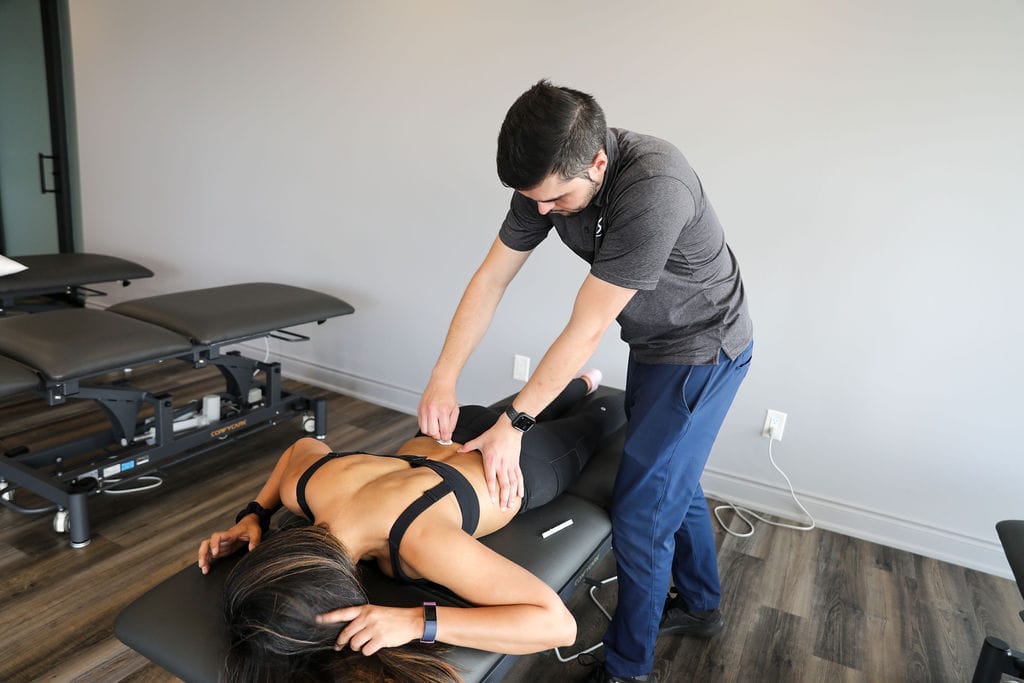
Back pain can be attributed to various factors, including:
How Physiotherapy Helps
Physiotherapy is a non-invasive treatment that addresses the root causes of back pain through a variety of techniques. Here’s how physiotherapy can be beneficial:
- Pain Relief: Physiotherapists use manual therapy techniques, such as massage and mobilization, to alleviate pain and reduce muscle tension.
- Improving Mobility: Through targeted exercises, physiotherapy helps improve the range of motion and flexibility of the spine and surrounding muscles.
- Strengthening Muscles: A customized exercise regimen strengthens the core muscles that support the spine, reducing the risk of future injuries.
- Posture Correction: Physiotherapists assess and correct posture, teaching patients how to maintain proper alignment to prevent strain.
- Education and Advice: Patients learn about body mechanics and ergonomics, empowering them to make lifestyle changes that support back health.
- Prevention: Regular physiotherapy sessions can help identify potential issues early, preventing the progression of back pain.
Common Physiotherapy Techniques for Back Pain
- Manual Therapy: Includes hands-on techniques to manipulate joints and soft tissues, improving mobility and reducing pain.
- Exercise Therapy: Tailored exercises aimed at strengthening, stretching, and stabilizing the back muscles.
- Electrotherapy: Uses electrical currents to reduce pain and inflammation.
- Heat and Cold Therapy: Applying heat or cold packs to alleviate pain and reduce swelling.
- Education and Advice: Providing patients with knowledge on posture, ergonomics, and activity modification to prevent back pain recurrence.
The Road to Recovery
The journey to recovery with physiotherapy involves several steps:
- Assessment: A thorough evaluation of the patient’s medical history, pain intensity, and physical condition.
- Treatment Plan: Development of a personalized treatment plan based on the assessment.
- Regular Sessions: Consistent physiotherapy sessions to implement the treatment plan and monitor progress.
- Home Exercises: Patients are given exercises to perform at home to complement in-clinic treatments.
- Follow-Up: Regular follow-ups to adjust the treatment plan as needed and ensure long-term success.
Conclusion
Back pain can significantly impact the quality of life, but physiotherapy offers a comprehensive and effective solution. By addressing the underlying causes and promoting healthy practices, physiotherapy helps individuals recover from back pain and prevent its recurrence. If you’re struggling with back pain, consider consulting a physiotherapist to embark on a path toward relief and improved well-being.
Click here to book an appointment for back pain treatment with a physiotherapist at one of our eight locations.
- Physiotherapy Etobicoke – Triangle Physiotherapy Etobicoke
- Oakville Physiotherapy Clinic – Triangle Physiotherapy Oakville
- Physiotherapy North York – Triangle Physiotherapy North York
- Mississauga Physiotherapy Clinics – Triangle Physiotherapy Mississauga
- Downtown Physiotherapy Clinics – Triangle Physiotherapy King West
- Uptown Physiotherapy Clinics – Triangle Physiotherapy Lawrence Park
- Physiotherapy Clinic Downtown Toronto – Triangle Physiotherapy Queens Quay
- Physiotherapy Clinics Mississauga – Triangle Physiotherapy Erin Mills
“Back pain can significantly impact your quality of life, but with the right physiotherapy care, you can find relief and restore function. Triangle Physiotherapy is available across the GTA, offering expert services at Physiotherapy in Etobicoke, Oakville, North York, Toronto, Lawrence Park, Queens Quay, Erin Mills, Mississauga, and Liberty Village. Our skilled team is dedicated to helping you manage and overcome back pain effectively.”
Massage Therapy has Many Stress-Relieving Benefits.
In today’s fast-paced world, stress has become a common issue for many people. Whether it’s work-related pressure, personal challenges, or the general hustle and bustle of daily life, stress can have a significant impact on both physical and mental health. One effective way to combat stress is through massage therapy.
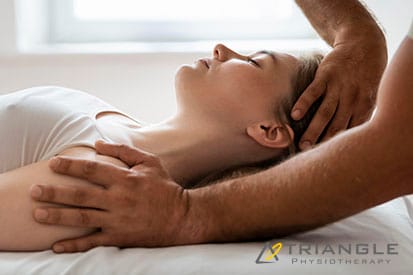
Here are three ways massage therapy can help reduce stress:
1. Physical Relaxation
One of the most immediate benefits of massage therapy is physical relaxation. Massage helps to relax tense muscles, reduce pain, and improve circulation. This physical relaxation can alleviate stress-related muscle tension, which is a common physical manifestation of stress. When the body is relaxed, it sends signals to the brain that help to reduce overall stress levels.
Massage techniques such as Swedish massage, deep tissue massage, and hot stone massage are particularly effective at promoting muscle relaxation. These techniques involve kneading, pressing, and rubbing the muscles to release tension and knots. As the muscles relax, blood flow improves, which helps to deliver oxygen and nutrients to tissues while removing toxins. This not only alleviates physical discomfort but also promotes a sense of well-being and relaxation.
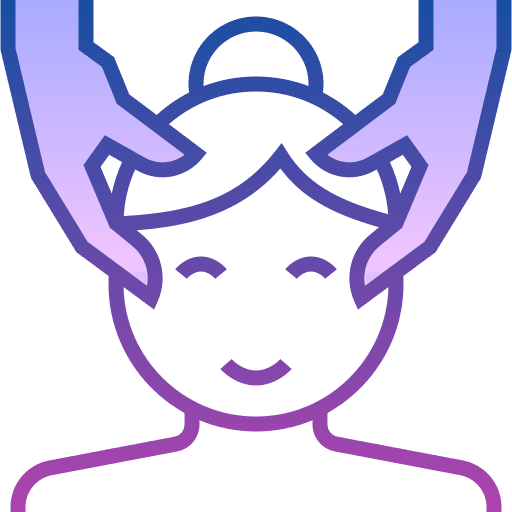
2. Reduction of Stress Hormones
Massage therapy can also help regulate the body’s stress response by affecting hormone levels. Studies have shown that massage therapy can lower the levels of cortisol, a hormone that the body releases in response to stress. High levels of cortisol are associated with various negative health effects, including anxiety, depression, and sleep disturbances.
In addition to lowering cortisol levels, massage therapy can increase the production of serotonin and dopamine. These neurotransmitters play key roles in mood regulation and overall feelings of happiness and well-being. Increased levels of serotonin and dopamine can help combat the effects of stress, leading to a more positive outlook and improved mental health.
3. Improved Sleep Quality
Stress often interferes with sleep, leading to a cycle of sleep deprivation and increased stress. Massage therapy can help break this cycle by promoting relaxation and reducing insomnia. Regular massage sessions have been shown to improve sleep quality by enhancing the body’s production of serotonin and melatonin, hormones that regulate sleep.
Better sleep allows the body and mind to recover from the daily stresses and challenges, leading to improved overall mental health and resilience against stressors. With regular massage therapy, individuals can experience more restful and restorative sleep, which in turn helps to reduce stress and improve their overall quality of life.
Click here to book an appointment with a massage therapist at one of our eight locations.
- Massage Therapy Etobicoke – Triangle Physiotherapy Etobicoke
- Oakville Massage Therapy Clinic – Triangle Physiotherapy Oakville
- Massage Therapy North York – Triangle Physiotherapy North York
- Mississauga Massage Therapy Clinics – Triangle Physiotherapy Mississauga
- Downtown Massage Therapy Clinics – Triangle Physiotherapy King West
- Uptown Massage Therapy Clinics – Triangle Physiotherapy Lawrence Park
- Massage Therapy Clinic Downtown Toronto – Triangle Physiotherapy Queens Quay
- Massage Therapy Clinics Mississauga – Triangle Physiotherapy Erin Mills
Massage therapy is an excellent way to reduce stress and improve overall well-being. If you’re seeking complementary treatments like massage therapy or physiotherapy in Etobicoke, Oakville, North York, Toronto, Lawrence Park, Queens Quay, Erin Mills, Mississauga, or Liberty Village, experienced physiotherapists are available to help you achieve better health and relaxation.
Spinal fusion surgery is a medical procedure used to permanently join two or more vertebrae in the spine, eliminating motion between them. The goal of the surgery is to reduce pain, correct deformities, or improve stability in the spine.
When would I need Spinal Fusion Surgery?
Spinal fusion surgery is typically recommended for various spine conditions, including:
- Degenerative disc disease: When the discs between vertebrae break down, causing pain.
- Spondylolisthesis: When one vertebra slips forward over the one below it.
- Spinal stenosis: Narrowing of the spinal canal, leading to nerve compression.
- Scoliosis: Abnormal curvature of the spine.
- Fractures: Vertebrae that are broken or dislocated.
- Tumors: Removal of tumors that affect spinal stability.
- Infections: Infections that have caused damage to the vertebrae.
When do I start physiotherapy after surgery?
The timing of when to start physiotherapy after spinal fusion surgery depends on several factors, including the specifics of the surgery, the patient’s overall health, and the surgeon’s recommendations.
What does post-surgery rehab involve?
Immediate Postoperative Period (0-6 Weeks)
- Initial Phase: Physiotherapy may start in the hospital within a day or two after surgery. The focus is on gentle movements and exercises to improve circulation and prevent complications.
- Activities:
- Breathing exercises to prevent lung complications.
- Gentle leg movements like ankle pumps to improve blood flow.
- Log rolling technique for safe movement in and out of bed.
- Short, frequent walks to promote circulation and reduce stiffness.
Early Rehabilitation Phase (6-12 Weeks)
- When: Typically, more structured physical therapy begins around 4 to 6 weeks after surgery, depending on the surgeon’s assessment.
- Goals: Gradually increase mobility, start gentle strengthening exercises, and improve functional movements.
- Activities:
- Range of motion exercises.
- Gentle strengthening exercises for the core and lower extremities.
- Walking programs to gradually increase distance and duration.
- Education on proper body mechanics and posture.
Late Rehabilitation Phase (3-6 Months)
- When: Around 3 months post-surgery, assuming there are no complications.
- Goals: Restore full function, enhance strength and endurance, and improve posture and body mechanics.
- Activities:
- More advanced strengthening exercises using resistance bands or light weights.
- Low-impact aerobic exercises like swimming or cycling.
- Balance and coordination exercises.
- Functional training for daily activities.
Long-Term Rehabilitation Phase (6-12 Months)
- When: After 6 months, the patient should continue with physiotherapy based on individual progress and goals.
- Goals: Achieve optimal strength, flexibility, and functional ability, and prevent recurrence of symptoms.
- Activities:
- Progressive resistance training.
- Gradual reintroduction of higher-impact activities, if appropriate.
- Sport-specific training for athletes.
- Ongoing education on maintaining spine health.
Key Points to Consider
- Surgeon’s Recommendations: Always follow the specific guidelines and timelines provided by the surgeon, as they know the details of the surgery and individual patient needs.
- Listen to Your Body: Avoid pushing through pain. Pain is a signal that something might be wrong, and it’s important to communicate any discomfort to the physiotherapist or surgeon.
- Individual Variation: Each patient’s recovery is unique. Factors such as age, overall health, and the complexity of the surgery will influence the timing and intensity of physiotherapy.
Starting physiotherapy at the right time is crucial for a successful recovery, and adhering to a structured rehabilitation program can significantly enhance outcomes after spinal fusion surgery.
Click here to book an appointment for post-surgery rehab with a physiotherapist at one of our eight locations.
- Physiotherapy Etobicoke – Triangle Physiotherapy Etobicoke
- Oakville Physiotherapy Clinic – Triangle Physiotherapy Oakville
- Physiotherapy North York – Triangle Physiotherapy North York
- Mississauga Physiotherapy Clinics – Triangle Physiotherapy Mississauga
- Downtown Physiotherapy Clinics – Triangle Physiotherapy King West
- Uptown Physiotherapy Clinics – Triangle Physiotherapy Lawrence Park
- Physiotherapy Clinic Downtown Toronto – Triangle Physiotherapy Queens Quay
- Physiotherapy Clinics Mississauga – Triangle Physiotherapy Erin Mills
General Information: The information provided on this blog is for general informational purposes only. While we strive to ensure the accuracy and relevance of our content, we make no guarantees about the completeness, reliability, or accuracy of the information.
Not Professional Advice: The content on this blog does not constitute professional advice. It is not a substitute for professional medical, legal, financial, or other professional advice. Always seek the guidance of a qualified professional with any questions you may have regarding your specific situation.
Recovering from spinal fusion surgery requires careful physiotherapy to restore mobility and strength. Whether you need physiotherapy in Etobicoke, Oakville, North York, Toronto, Lawrence Park, Queens Quay, Erin Mills, Mississauga, or Liberty Village, there are expert physiotherapists available to guide your recovery journey and help you regain your quality of life.
Hiking is a fantastic way to enjoy the great outdoors and stay fit, but it can also pose some risks. Whether you’re new to hiking or a seasoned backpacker, there are numerous factors to take into account before heading out on the trails. You need to evaluate your backpack’s weight, choose appropriate footwear, plan your food and hydration, check the weather, and map out your routes. Additionally, since hiking often takes you off the beaten path, it’s essential to take precautions against three common hiking injuries: knee pain, ankle sprains, and sore feet.
Is it necessary to warm up before hiking?
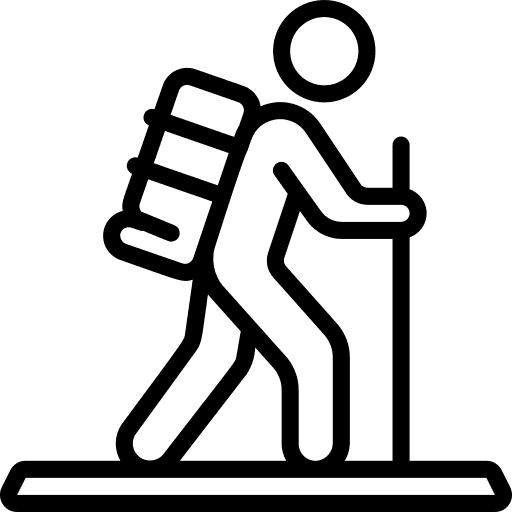
Yes, it is necessary to warm up before hiking. Warming up helps prepare your muscles and joints for physical activity, reducing the risk of injury. Here are some reasons why warming up is important before hiking:
Benefits of Warming Up Before Hiking
- Increases Blood Flow: A proper warm-up increases blood flow to your muscles, delivering oxygen and nutrients that help them perform better.
- Enhances Flexibility: Warming up loosens your muscles and increases your range of motion, making it easier to navigate uneven terrain.
- Reduces Injury Risk: Warm muscles are less prone to strains, sprains, and other injuries.
- Prepares Your Heart: Gradually increasing your heart rate helps prepare your cardiovascular system for the more strenuous activity of hiking.
- Improves Performance: A good warm-up can improve your overall performance, making your hike more enjoyable and less exhausting.
What are some effective warm up exercises to do before hiking?
Effective Warm-Up Exercises
- Walking or Light Jogging: Start with 5-10 minutes of brisk walking or light jogging to get your blood flowing.
- Dynamic Stretches: Perform dynamic stretches like leg swings, arm circles, and torso twists to loosen up your muscles and joints.
- Ankle Rotations: Rotate your ankles in circles to prepare them for the uneven terrain.
- Hip Circles: Rotate your hips to loosen the hip joints, which are crucial for hiking.
- Calf Raises: Perform calf raises to warm up your calves, which are heavily used during hiking.
Taking a few minutes to warm up before you start your hike can make a significant difference in your overall hiking experience and help prevent injuries.
What are the most common hiking injuries?
Some of the most common hiking injuries are:
- Knee Pain
- Ankle Sprain
- Foot Pain
Knee Pain when Hiking
Knee pain is a common issue among hikers, especially on longer or more challenging trails. Here’s a comprehensive approach to understanding, preventing, and managing knee pain when hiking:
Causes of Knee Pain While Hiking
- Overuse and Strain: Continuous stress on the knee joint from uphill climbs, downhill descents, or long sessions of hiking.
- Improper Biomechanics: Poor hiking technique, such as improper foot placement or stride, can strain the knee joint.
- Previous Injuries: Past knee injuries or conditions like arthritis can flare up during hiking.
- Improper Gear: Worn-out or inappropriate footwear lacking proper cushioning and support.
Ankle Sprain when Hiking
An ankle sprain can be a painful and frustrating injury, especially when hiking in rugged terrain. Here’s how to understand, prevent, and manage ankle sprains while hiking:
Causes of Ankle Sprains While Hiking
- Uneven Terrain: Stepping on uneven surfaces, rocks, or roots can twist or roll the ankle.
- Fatigue: Muscles that support the ankle can become tired, leading to less stability and increased risk of injury.
- Inadequate Footwear: Wearing shoes or boots without proper ankle support or that are worn out.
Foot Pain when Hiking
Foot pain while hiking can be uncomfortable and distracting. Here’s how to understand, prevent, and manage foot pain effectively:
Causes of Foot Pain While Hiking
- Improper Footwear: Shoes or boots that are too tight, loose, worn out, or lacking proper cushioning and support.
- Overuse or Strain: Prolonged walking or hiking, especially on challenging terrain, can strain the muscles and joints of the feet.
- Blisters: Friction from improperly fitting shoes or moisture buildup can lead to painful blisters.
If you get injured while hiking, consult one of our physiotherapists who can help you with treating the injuries as well as advise and educate you on prevention so you can enjoy your outdoor activities without pain and discomfort.
Click here to book an appointment with a physiotherapist at one of our eight locations.
- Physiotherapy Etobicoke – Triangle Physiotherapy Etobicoke
- Oakville Physiotherapy Clinic – Triangle Physiotherapy Oakville
- Physiotherapy North York – Triangle Physiotherapy North York
- Mississauga Physiotherapy Clinics – Triangle Physiotherapy Mississauga
- Downtown Physiotherapy Clinics – Triangle Physiotherapy King West
- Uptown Physiotherapy Clinics – Triangle Physiotherapy Lawrence Park
- Physiotherapy Clinic Downtown Toronto – Triangle Physiotherapy Queens Quay
- Physiotherapy Clinics Mississauga – Triangle Physiotherapy Erin Mills
A rotator cuff tears are common injuries to the shoulder, involving a tear in one or more of the tendons of the rotator cuff muscles. It is one of the leading causes of shoulder pain and disability. The rotator cuff is a group of four muscles and their tendons that stabilize the shoulder and allow for its wide range of motion.
Understanding Rotator Cuff Tears: Causes and Symptoms
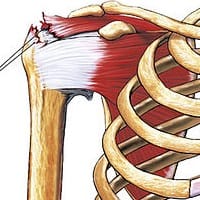
The rotator cuff is a group of four muscles and their tendons that stabilize the shoulder and allow for its wide range of motion. These muscles are:
- Supraspinatus
- Infraspinatus
- Teres minor
- Subscapularis
Types of Rotator Cuff Tears
- Partial Tear: This type of tear damages the tendon but does not completely sever it.
- Complete Tear: Also known as a full-thickness tear, this type involves the tendon being split into two pieces or pulled completely off the bone.
Causes
- Acute Injury: Sudden injuries, such as a fall on an outstretched arm or lifting something heavy with a jerking motion.
- Degenerative Wear and Tear: Gradual wear over time due to aging, repetitive stress from activities (like sports or certain jobs), or poor shoulder mechanics.
Symptoms
- Pain at rest and at night, particularly if lying on the affected shoulder
- Pain when lifting and lowering your arm or with specific movements
- Weakness in the shoulder
- Crackling sensation when moving the shoulder in certain positions
Importance of Physiotherapy in Rotator Cuff Tear Treatment
Physiotherapy plays a crucial role in the treatment and rehabilitation of rotator cuff tears. It can help in several ways, whether as a primary treatment for less severe tears or as a post-surgical rehabilitation strategy for more significant injuries. Here are some key points highlighting the importance of physiotherapy in rotator cuff tear treatment:
Pain Reduction
- Manual Therapy: Techniques such as massage and joint mobilization can help reduce pain and improve shoulder function.
- Modalities: Use of heat, ice, ultrasound, and electrical stimulation can help manage pain and inflammation.
Restoring Range of Motion
- Stretching Exercises: Specific stretches help maintain and gradually improve shoulder flexibility.
- Mobilization Techniques: Gentle mobilization can help increase the range of motion without causing further injury.
Strengthening Shoulder Muscles
- Strengthening Exercises: Focused on the rotator cuff and surrounding muscles, these exercises help restore strength and function to the shoulder.
- Progressive Resistance: Gradual increase in resistance helps to build muscle strength over time.
Improving Shoulder Stability
- Proprioceptive Training: Exercises that improve the body’s ability to sense the position and movement of the shoulder, enhancing stability.
- Functional Training: Exercises tailored to improve stability during daily activities and specific movements required in sports or work.
Enhancing Surgical Outcomes
- Pre-Surgical Physiotherapy (“Prehabilitation”): Strengthening and conditioning the shoulder before surgery can lead to better post-surgical outcomes.
- Post-Surgical Rehabilitation: Structured physiotherapy is essential to restore function, strength, and range of motion after surgery. It also helps minimize scar tissue formation and adhesions.
Preventing Further Injury
- Education: Teaching proper shoulder mechanics and ergonomic principles to avoid movements that can exacerbate the injury.
- Exercise Regimen: Developing a long-term exercise plan to maintain shoulder health and prevent future injuries.
Tailored Rehabilitation Programs
- Individualized Plans: Physiotherapists create personalized treatment plans based on the specific nature of the tear, the patient’s overall health, and their functional goals.
- Goal Setting: Setting realistic and progressive goals to keep the patient motivated and track progress.
Long-Term Shoulder Health
- Maintenance Exercises: Developing a routine of exercises to be continued even after formal physiotherapy ends to maintain shoulder health.
- Lifestyle Modifications: Advice on modifications to daily activities and sports techniques to protect the shoulder.
In summary, physiotherapy is an integral part of the comprehensive management of rotator cuff tears, offering a non-invasive approach to pain relief, functional restoration, and long-term shoulder health. It provides a structured and supportive environment for recovery, whether used alone or in conjunction with surgical treatments.
Click here to book an appointment with a physiotherapist at one of our eight locations.
- Physiotherapy Etobicoke – Triangle Physiotherapy Etobicoke
- Oakville Physiotherapy Clinic – Triangle Physiotherapy Oakville
- Physiotherapy North York – Triangle Physiotherapy North York
- Mississauga Physiotherapy Clinics – Triangle Physiotherapy Mississauga
- Downtown Physiotherapy Clinics – Triangle Physiotherapy King West
- Uptown Physiotherapy Clinics – Triangle Physiotherapy Lawrence Park
- Physiotherapy Clinic Downtown Toronto – Triangle Physiotherapy Queens Quay
- Physiotherapy Clinics Mississauga – Triangle Physiotherapy Erin Mills
“Rotator cuff tears require expert treatment and rehabilitation to restore function and reduce pain. Triangle Physiotherapy offers specialized care across the GTA. Whether you’re seeking Physiotherapy in Etobicoke, Oakville, North York, Toronto, Lawrence Park, Queens Quay, Erin Mills, Mississauga, or Liberty Village, our experienced team is here to help you on your recovery journey.”
The choice between physiotherapy and massage therapy depends on your specific needs, goals, and health conditions. Here’s a detailed comparison to help you decide which might be better for you:
Physiotherapy
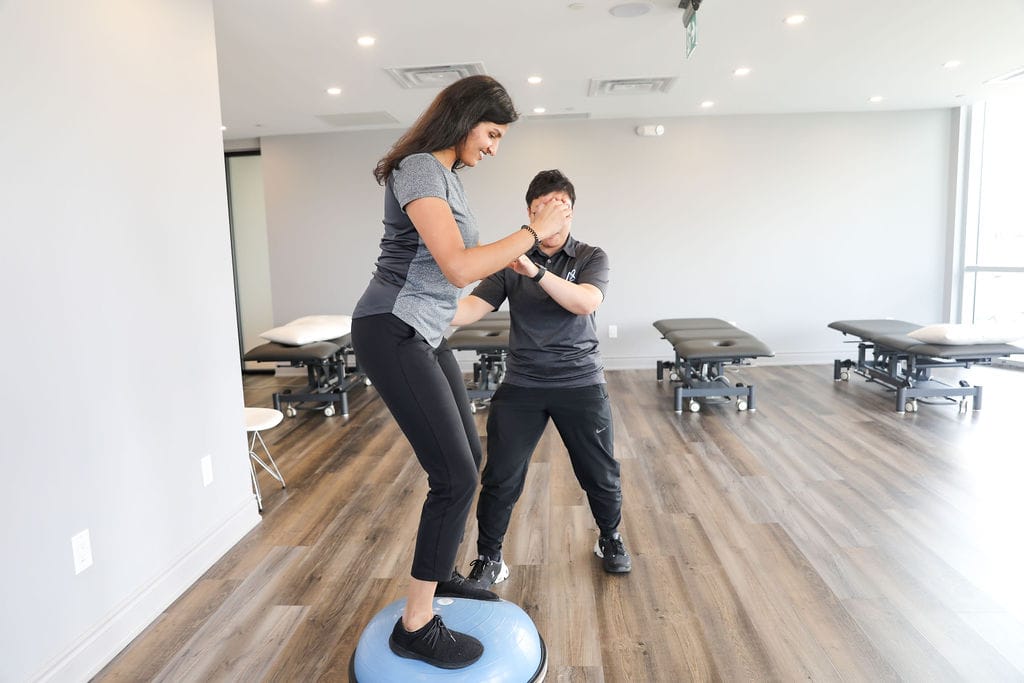
What it is:
- A healthcare profession focused on diagnosing, managing, and preventing movement disorders.
- Uses exercises, manual therapy, education, and modalities like ultrasound and electrical stimulation.
Benefits:
- Rehabilitation: Effective for recovering from injuries, surgeries, and chronic conditions like arthritis.
- Pain Management: Addresses the root cause of pain through various techniques and exercises.
- Improved Mobility: Helps restore function and movement, particularly after injury or surgery.
- Preventive Care: Offers strategies to prevent future injuries or manage chronic conditions.
- Customized Treatment: Tailors plans based on individual assessments and needs.
Common Conditions Treated:
- Musculoskeletal injuries (e.g., sprains, fractures)
- Neurological conditions (e.g., stroke, multiple sclerosis)
- Cardiopulmonary issues (e.g., chronic obstructive pulmonary disease)
- Post-surgical rehabilitation
Massage Therapy
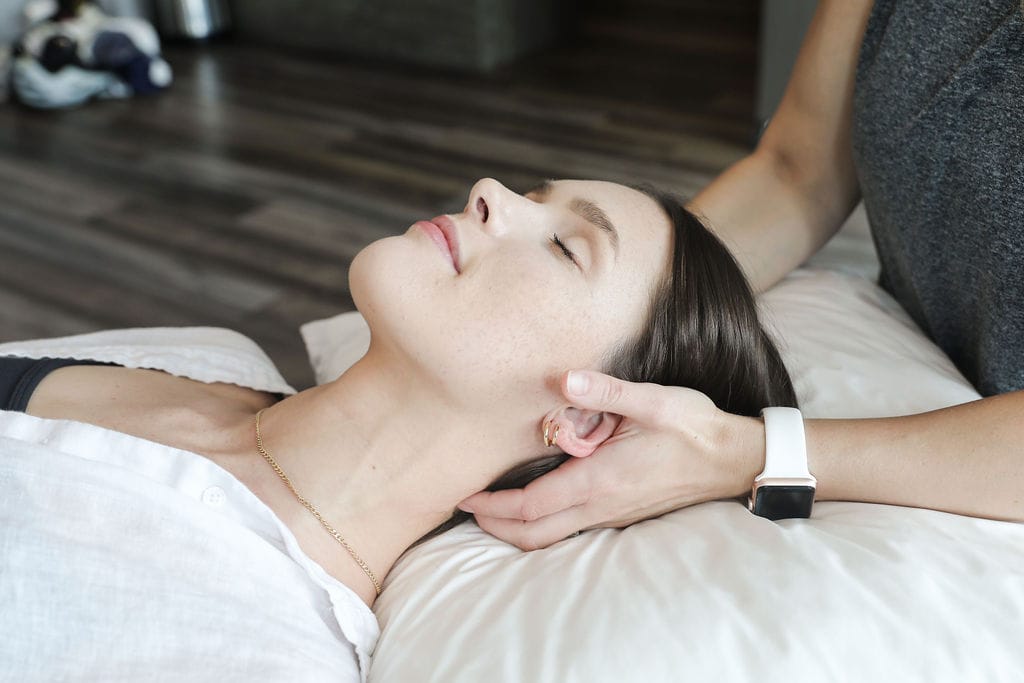
What it is:
- A practice involving the manipulation of soft tissues (muscles, tendons, ligaments) to enhance well-being.
- Uses techniques like stroking, kneading, and applying pressure.
Benefits:
- Relaxation: Promotes overall relaxation and stress relief.
- Pain Relief: Alleviates muscle tension and pain.
- Improved Circulation: Enhances blood flow, which can aid in healing.
- Flexibility: Increases range of motion and reduces stiffness.
- Mental Health: Can improve mood and reduce symptoms of anxiety and depression.
Common Conditions Treated:
- Muscle tension and soreness
- Stress-related conditions
- Chronic pain (e.g., back pain, fibromyalgia)
- Sports injuries
- Headaches and migraines
Which is Better for You?
- For Injury Rehabilitation or Chronic Conditions:
- Physiotherapy is typically more suitable as it provides a structured approach to recovery, addressing the underlying causes of your condition.
- For Stress Relief and Muscle Tension:
- Massage Therapy can be highly effective if your primary goal is relaxation and relief from muscle tightness.
- For Pain Management:
- Both can be effective, but the choice depends on the cause of the pain. Physiotherapy is often better for pain related to injury or chronic conditions, while massage therapy can be great for muscle-related pain.
- For Improved Mobility and Function:
- Physiotherapy focuses on restoring function and movement, making it the better choice for mobility issues.
- For Preventive Care:
- Physiotherapy provides long-term strategies to prevent injuries and manage chronic conditions.
- For Overall Well-being and Relaxation:
- Massage Therapy is beneficial for enhancing general well-being, reducing stress, and promoting relaxation.
Combination of Both:
- In some cases, a combination of physiotherapy and massage therapy can be beneficial. For example, physiotherapy can address the underlying issues, while massage therapy can help manage symptoms and improve overall well-being.
Conclusion:
Consult with a healthcare professional to get a personalized recommendation based on your specific health needs and goals. They can help you decide the best course of action and whether one or a combination of both therapies is ideal for you.
Click here to book an appointment with a physiotherapist and massage therapist at one of our eight locations.
- Physiotherapy Etobicoke – Triangle Physiotherapy Etobicoke
- Oakville Physiotherapy Clinic – Triangle Physiotherapy Oakville
- Physiotherapy North York – Triangle Physiotherapy North York
- Mississauga Physiotherapy Clinics – Triangle Physiotherapy Mississauga
- Downtown Physiotherapy Clinics – Triangle Physiotherapy King West
- Uptown Physiotherapy Clinics – Triangle Physiotherapy Lawrence Park
- Physiotherapy Clinic Downtown Toronto – Triangle Physiotherapy Queens Quay
- Physiotherapy Clinics Mississauga – Triangle Physiotherapy Erin Mills
Choosing between physiotherapy and massage therapy depends on your specific needs and health goals. Both can be beneficial for pain relief and overall wellness. For those looking for physiotherapy in Etobicoke, Oakville, North York, Toronto, Lawrence Park, Queens Quay, Erin Mills, Mississauga, or Liberty Village, there are skilled practitioners available to help you decide the best approach for your situation.
Physiotherapy can be highly beneficial for individuals suffering from knee osteoarthritis (OA) by addressing pain, improving function, and enhancing the overall quality of life.
What is Knee Osteoarthritis (OA)?
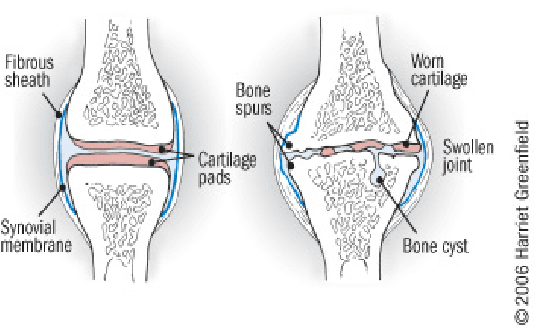
Knee OA is a degenerative joint disease that is typically a result of wear and tear and causes progressive loss of the articular cartilage of the joint.
What are the causes of Knee OA?
Knee osteoarthritis (OA) is a complex condition influenced by a variety of factors. Here are the primary causes and contributing factors:
1. Aging
- Natural Wear and Tear: As people age, the cartilage that cushions the knee joint gradually wears away, leading to OA.
- Decreased Ability to Heal: Older cartilage has a reduced ability to repair itself, making it more susceptible to damage.
2. Genetics
- Family History: Genetic predisposition can play a significant role. If OA runs in your family, you might be more likely to develop it.
- Genetic Mutations: Certain genetic mutations can affect cartilage production and maintenance.
3. Joint Injuries
- Previous Injuries: Injuries such as fractures, ligament tears, or meniscus damage can increase the risk of OA.
- Repetitive Stress Injuries: Repeated stress or overuse of the knee joint, often due to occupational or recreational activities, can lead to OA.
4. Obesity
- Increased Joint Load: Excess body weight puts additional stress on the knee joints, accelerating cartilage breakdown.
- Inflammation: Fat tissue produces inflammatory chemicals that can contribute to joint damage.
5. Mechanical Factors
- Joint Alignment: Abnormal joint alignment, such as bowlegs or knock-knees, can increase stress on certain parts of the knee.
- Muscle Weakness: Weak muscles around the knee, particularly the quadriceps, can lead to increased joint stress.
6. Gender
- Higher Risk in Women: Women, especially those over 50, are more likely to develop knee OA compared to men. Hormonal differences might contribute to this increased risk.
7. Metabolic and Systemic Factors
- Metabolic Syndrome: Conditions like diabetes and metabolic syndrome are associated with an increased risk of OA due to systemic inflammation and metabolic disturbances.
- Inflammatory Diseases: Conditions such as rheumatoid arthritis can predispose individuals to secondary OA.
8. Lifestyle Factors
- Physical Activity: Both excessive and insufficient physical activity can affect joint health. High-impact sports can lead to joint injuries, while sedentary lifestyles can weaken muscles and joints.
- Diet: Poor nutrition can affect joint health. For example, deficiencies in vitamins D and C can impair cartilage maintenance and repair.
9. Joint Biomechanics
- Meniscus Tears: Damage to the meniscus can disrupt joint mechanics and contribute to OA.
- Ligament Damage: Injuries to ligaments, such as the ACL, can destabilize the knee and lead to abnormal wear patterns.
10. Inflammation
- Low-Grade Inflammation: Chronic low-grade inflammation can contribute to the breakdown of cartilage and other joint tissues.
Understanding these causes and contributing factors can help in the prevention and management of knee osteoarthritis, emphasizing the importance of maintaining a healthy lifestyle, avoiding joint injuries, and seeking early intervention for symptoms.
What are the most common symptoms of Knee OA?
Knee osteoarthritis (OA) typically presents with a range of symptoms that can vary in intensity from mild to severe. The most common symptoms include:
1. Pain
- Activity-Related Pain: Pain that worsens with activity or weight-bearing and improves with rest.
- Persistent Pain: Chronic pain that may be present even at rest or during the night in more advanced stages.
2. Stiffness
- Morning Stiffness: Stiffness in the knee that is usually worse in the morning or after periods of inactivity and typically lasts less than 30 minutes.
- Post-Activity Stiffness: Stiffness that occurs after prolonged sitting or resting.
3. Swelling
- Joint Swelling: Swelling around the knee joint due to inflammation or increased production of joint fluid.
- Effusion: Accumulation of excess fluid within the knee joint, leading to noticeable swelling.
4. Reduced Range of Motion
- Limited Flexibility: Difficulty bending or straightening the knee fully.
- Loss of Motion: Progressive decrease in the knee’s range of motion over time.
5. Grinding Sensation (Crepitus)
- Audible Cracking or Popping: A sensation of grinding, cracking, or popping sounds when moving the knee, often due to roughened cartilage surfaces.
6. Weakness or Instability
- Feeling of Giving Way: A sensation that the knee might buckle or give out, often due to muscle weakness or joint instability.
- Muscle Weakness: Weakness in the muscles surrounding the knee, particularly the quadriceps.
7. Deformity
- Joint Deformities: Changes in the shape of the knee joint, such as bowlegged (varus) or knock-kneed (valgus) appearance, due to uneven wear and joint damage.
8. Tenderness
- Joint Tenderness: Tenderness or pain when pressing on or around the knee joint.
9. Functional Impairment
- Difficulty with Activities: Challenges with everyday activities such as walking, climbing stairs, sitting, or standing due to pain and stiffness.
- Reduced Mobility: Decreased ability to perform normal daily activities and exercise.
10. Fatigue
- General Fatigue: Feeling of tiredness and reduced energy levels, often due to chronic pain and sleep disturbances.
These symptoms can significantly impact an individual’s quality of life and ability to perform daily activities. Early recognition and management of knee OA symptoms can help slow disease progression and improve function and comfort.
What are the treatment options for Knee OA?
The number 1 treatment option is conservative management (ie. Patient education, therapeutic exercise, activity modification, weight loss, bracing), surgery should be considered after a conservative approach (talk to your orthopaedic specialist for more information).
Physiotherapy can help by providing you with education about osteoarthritis, tailor an exercise program that is suitable for you, help you consider the best options for activity modifications, provide you with education on bracing, address psychosocial factors such as fear-avoidance, promote patient autonomy and get you back to doing the things you love to do!
Manual therapy- joint mobilization to help with stiffness. Muscle energy technique to help stretch surrounding muscles.
Modalities – heat/ice for pain relief, TENs/IFC for pain relief and inflammation control. Ultrasound for pain relief.
Exercises – help with improving mobility, ROM, strength, balance, aerobic capacity, promoting physical function, reducing knee pain and inflammation.
Click here to book an appointment with a physiotherapist at one of our eight locations.
- Physiotherapy Etobicoke – Triangle Physiotherapy Etobicoke
- Oakville Physiotherapy Clinic – Triangle Physiotherapy Oakville
- Physiotherapy North York – Triangle Physiotherapy North York
- Mississauga Physiotherapy Clinics – Triangle Physiotherapy Mississauga
- Downtown Physiotherapy Clinics – Triangle Physiotherapy King West
- Uptown Physiotherapy Clinics – Triangle Physiotherapy Lawrence Park
- Physiotherapy Clinic Downtown Toronto – Triangle Physiotherapy Queens Quay
- Physiotherapy Clinics Mississauga – Triangle Physiotherapy Erin Mills
Physiotherapy can be a highly effective treatment for managing knee osteoarthritis by improving mobility, reducing pain, and enhancing overall function. Whether you are looking for physiotherapy in Etobicoke, Oakville, North York, Toronto, Lawrence Park, Queens Quay, Erin Mills, Mississauga, or Liberty Village, there are experienced physiotherapists ready to help you manage osteoarthritis and improve your quality of life.
Pelvic Health – Menstrual cups and menstrual discs are reusable feminine hygiene products designed to collect menstrual fluid.
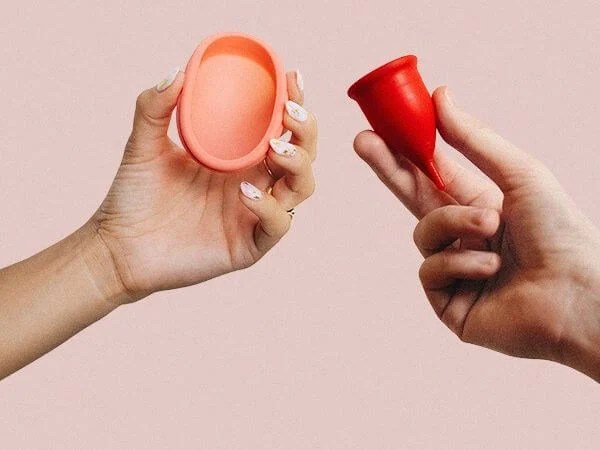
What is a Menstrual Cup?
Menstrual cups are generally crafted from silicone or rubber.
Unlike tampons, which absorb blood, these cups collect it, reducing the risk of infection.
One advantage of the menstrual cup is its larger capacity compared to a tampon’s absorbency, allowing for less frequent changes. Most cups can be worn for up to 12 hours, depending on your flow.
What is a Menstrual Disc?
Unlike menstrual cups, menstrual discs sit higher in the vaginal canal, tucked behind the pubic bone. Here are some key features and benefits of menstrual discs:
- Design and Use:
- Shape: Menstrual discs are flat and round, resembling a small diaphragm, with a flexible rim and a thin, flexible body.
- Insertion: The disc is pinched and inserted into the vagina, where it is positioned horizontally and covers the cervix.
- Capacity: Like menstrual cups, discs can hold a significant amount of fluid and can be worn for up to 12 hours.
What are the benefits of a Menstrual Cup?
Benefits:
- Cost-Effective: While the initial purchase price may be higher than disposable products, menstrual cups can be reused for several years, saving money over time.
- Eco-Friendly: Reusable nature reduces waste compared to disposable tampons and pads.
- Health: Made from medical-grade materials that are safe and reduce the risk of Toxic Shock Syndrome (TSS) associated with tampons.
What are the benefits of a Menstrual Disc?
Benefits:
- Comfort: Positioned differently than cups, discs can be more comfortable for some users, especially during physical activities or sex.
- Mess-Free Intercourse: Many menstrual discs can be worn during intercourse without obstructing the vaginal canal, offering a mess-free experience.
- Eco-Friendly: Reusable menstrual discs reduce waste compared to disposable products. However, there are also single-use disposable options available.
Using a Menstrual Cup Vs. a Menstrual Disc
Using a menstrual cup involves a few steps to ensure proper insertion, positioning, and removal. Here’s a detailed guide on how to use a menstrual cup:Insertion
Wash Your Hands:
- C-fold: Press the sides of the cup together and then fold it in half to form a “C” shape.Punch-down fold: Push the rim of the cup down into the base, creating a narrower point for insertion.
Duration:
Wash Your Hands:
Sterilization:
Using a menstrual disc involves a few steps to ensure proper insertion, positioning, and removal. Here is a detailed guide on how to use a menstrual disc:Insertion
Wash Your Hands:
Duration:
Wash Your Hands:
Sterilization:
Menstrual discs and cups are both effective options for period management. Choose the one that suits you best based on factors like comfort, lifestyle, and size preference. Ultimately, neither a disc nor a cup might be the right choice for you, but they are both excellent alternatives to tampons for those seeking different options.
Our More Locations
Physiotherapy Etobicoke | Physiotherapy Oakville | Physiotherapy North York | Physiotherapy Toronto | Physiotherapy Lawrence Park | Physiotherapy Mississauga | Physiotherapy Queens Quay | Physiotherapy Mississauga Erin Mills | Physiotherapy Liberty Village
Where can I find a pelvic health physiotherapist in Mississauga?
We have 8 locations with pelvic health physiotherapists to help you.
- Pelvic Health Physiotherapy Etobicoke – Triangle Physiotherapy Etobicoke
- Oakville Pelvic Health – Triangle Physiotherapy Oakville
- Pelvic Health Physiotherapy North York – Triangle Physiotherapy North York
- Mississauga Pelvic Health – Triangle Physiotherapy Mississauga
- Downtown Pelvic Health – Triangle Physiotherapy King West
- Uptown Toronto Pelvic Health – Triangle Physiotherapy Lawrence Park
- Pelvic Physiotherapy Downtown Toronto – Triangle Physiotherapy Queens Quay
- Mississauga Pelvic Health – Triangle Physiotherapy Erin Mills
Choosing between a menstrual cup and a menstrual disc can depend on individual comfort and pelvic health needs. For expert advice on pelvic health and guidance on using these products, consider physiotherapy in Etobicoke, Oakville, North York, Toronto, Lawrence Park, Queens Quay, Erin Mills, Mississauga, or Liberty Village. Experienced physiotherapists in these locations can provide personalized care and support for all your pelvic health concerns.
Physiotherapy and chiropractic care are both forms of manual therapy that focus on the treatment of musculoskeletal issues, but they have different approaches, philosophies, and techniques. Here’s a comparison of the two:
Physiotherapy
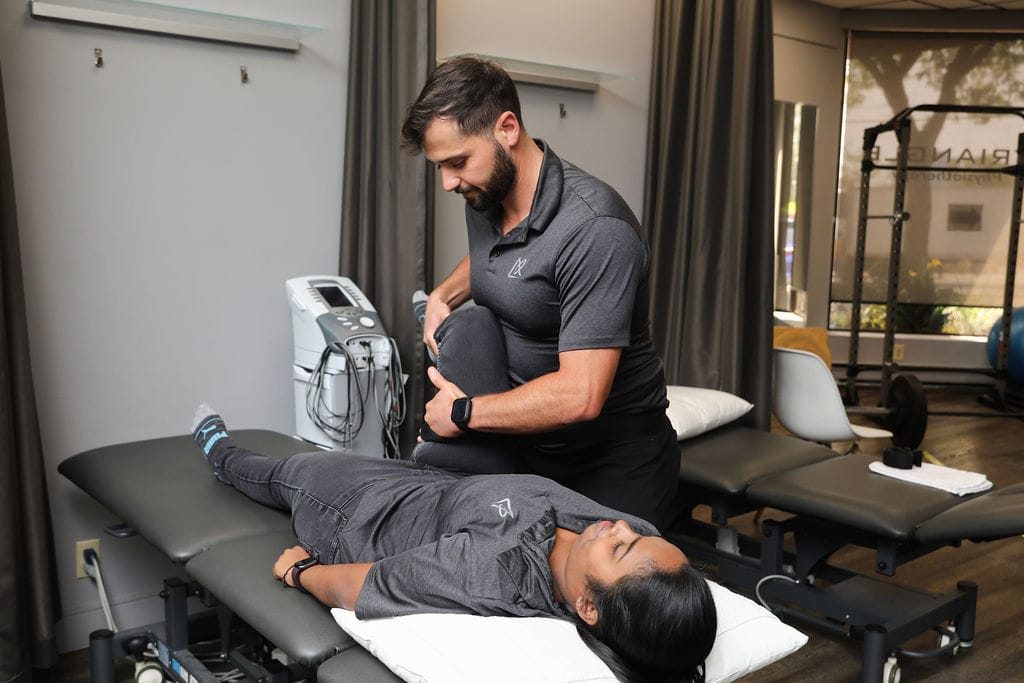
Approach:
- Holistic and comprehensive treatment aimed at restoring movement and function.
- Utilizes evidence-based practices.
Philosophy:
- Focuses on the body as a whole and treats a wide range of conditions, including musculoskeletal, neurological, and cardiovascular issues.
- Emphasizes rehabilitation, prevention, and overall well-being.
Techniques:
- Exercises and stretches to improve mobility and strength.
- Manual therapy, including massage and mobilization of joints.
- Electrotherapy, ultrasound, and other modalities for pain relief and inflammation reduction.
- Education and advice on posture, ergonomics, and lifestyle changes.
Conditions Treated:
- Musculoskeletal pain (e.g., back, neck, shoulder).
- Post-operative rehabilitation.
- Sports injuries.
- Pelvic Health
- Cancer Rehab
- Vestibular Conditions
- Neurological disorders (e.g., stroke, Parkinson’s disease).
- Chronic conditions (e.g., arthritis).
Qualifications:
- Requires a degree in physiotherapy and registration with provincial regulatory body.
- Involves extensive training in anatomy, physiology, and pathology.
Chiropractic
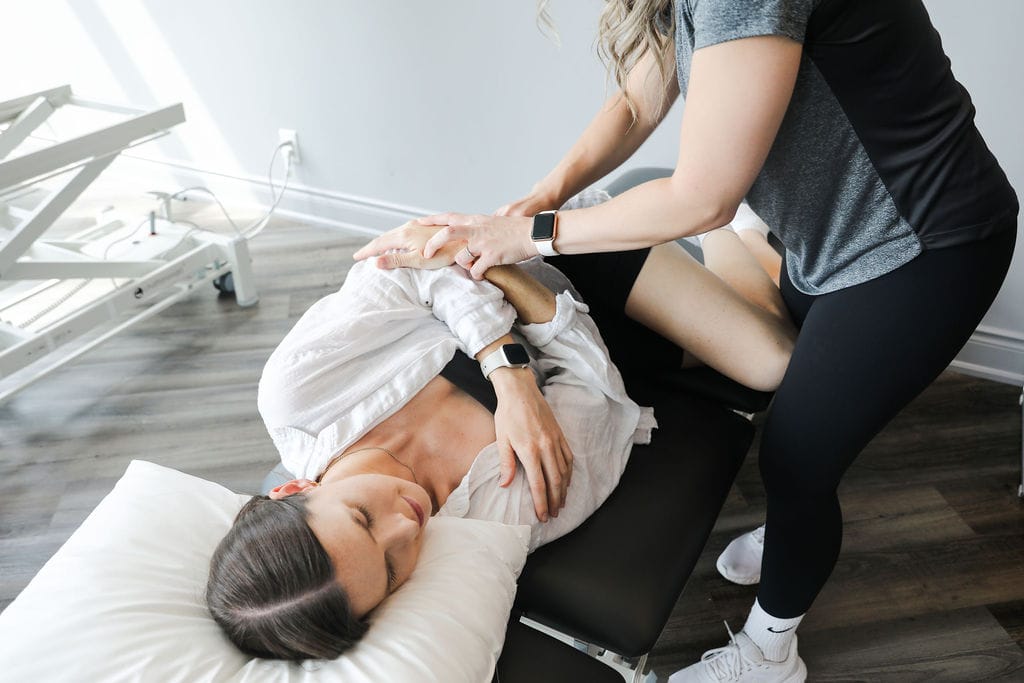
Approach:
- Primarily focuses on the diagnosis and treatment of mechanical disorders of the spine.
- Utilizes spinal adjustments and manipulations.
Philosophy:
- Based on the principle that spinal health affects overall health and well-being.
- Emphasizes the relationship between the spine and nervous system.
Techniques:
- Spinal manipulations and adjustments to restore joint function and support the nervous system.
- Manual adjustments often performed with a high-velocity thrust.
- May include advice on exercise, diet, and lifestyle.
Conditions Treated:
- Back and neck pain.
- Headaches and migraines.
- Joint pain (e.g., hips, knees).
- Sciatica and other nerve-related issues.
Qualifications:
- Requires a Doctor of Chiropractic (DC) degree and registration with provincial regulatory body.
- Involves training in anatomy, physiology, and specialized chiropractic techniques.
Key Differences between Physiotherapy and Chiropractic
- Scope of Practice:
- Physiotherapists: Treat a broader range of conditions affecting various body systems.
- Chiropractors: Primarily focus on spinal health and its impact on overall health but can also treat other musculoskeletal conditions.
- Techniques Used:
- Physiotherapists: Employ a wide variety of techniques including exercise, manual therapy, and electrotherapy.
- Chiropractors: Primarily use spinal adjustments and manipulations but are also trained in treating other joints.
- Philosophical Focus:
- Physiotherapists: Emphasize holistic rehabilitation and prevention.
- Chiropractors: Emphasize the importance of spinal alignment for overall health.
- Educational Path:
- Physiotherapists: Typically require a Bachelor’s or Master’s degree in physiotherapy.
- Chiropractors: Require a Doctor of Chiropractic degree.
When to Choose Each
- Physiotherapy: Suitable for a wide range of conditions, particularly when rehabilitation, exercise, and a holistic approach are needed.
- Chiropractic Care: Beneficial for conditions specifically related to spinal health and when spinal adjustments are indicated.
Ultimately, the choice between physiotherapy and chiropractic care may depend on the specific condition being treated, the patient’s preferences, and the recommendations of healthcare professionals. In some cases, a combination of both therapies might be the most effective approach.
Click here to book an appointment with a physiotherapist or chiropractor at one of our eight locations.
- Physiotherapy Etobicoke – Triangle Physiotherapy Etobicoke
- Oakville Physiotherapy Clinic – Triangle Physiotherapy Oakville
- Physiotherapy North York – Triangle Physiotherapy North York
- Mississauga Physiotherapy Clinics – Triangle Physiotherapy Mississauga
- Downtown Physiotherapy Clinics – Triangle Physiotherapy King West
- Uptown Physiotherapy Clinics – Triangle Physiotherapy Lawrence Park
- Physiotherapy Clinic Downtown Toronto – Triangle Physiotherapy Queens Quay
- Physiotherapy Clinics Mississauga – Triangle Physiotherapy Erin Mills
Deciding between physiotherapy and chiropractic care depends on your specific needs and conditions. Both can offer significant benefits for pain management and overall health. If you are considering physiotherapy in Etobicoke, Oakville, North York, Toronto, Lawrence Park, Queens Quay, Erin Mills, Mississauga, or Liberty Village, there are expert physiotherapists available to guide you toward the best treatment approach for your unique situation.
Pelvic pain is discomfort or pain experienced in the lower part of the abdomen, below the belly button and between the hips. This type of pain can affect both men and women and can arise from various conditions. The nature of pelvic pain can vary; it might be sharp, dull, intermittent, or constant, and can be acute (short-term) or chronic (lasting longer than six months).
What causes pelvic pain?
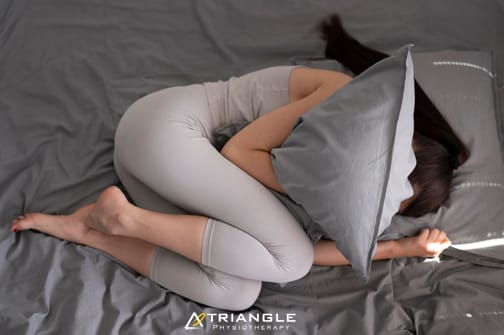
Common Causes of Pelvic Pain
In Women:
- Menstrual Cramps: Pain associated with menstruation (dysmenorrhea).
- Endometriosis: A condition where tissue similar to the lining inside the uterus grows outside of it.
- Ovarian Cysts: Fluid-filled sacs on the ovaries.
- Pelvic Inflammatory Disease (PID): An infection of the reproductive organs.
- Fibroids: Noncancerous growths in the uterus.
- Ectopic Pregnancy: A pregnancy occurring outside the uterus.
- Interstitial Cystitis: Chronic inflammation of the bladder.
In Men:
- Prostatitis: Inflammation of the prostate gland.
- Hernia: When an organ pushes through an opening in the muscle or tissue.
- Chronic Pelvic Pain Syndrome (CPPS): Persistent pain in the pelvic region.
Both Genders:
- Urinary Tract Infections (UTIs): Infections in any part of the urinary system.
- Appendicitis: Inflammation of the appendix.
- Gastrointestinal Issues: Conditions such as irritable bowel syndrome (IBS) or diverticulitis.
- Musculoskeletal Issues: Problems with muscles, ligaments, or joints in the pelvic area.
What are the symptoms related to pelvic pain?
Symptoms of pelvic pain can vary widely depending on the underlying cause and the individual. Here are common symptoms associated with pelvic pain:
General Symptoms of Pelvic Pain
- Aching or Discomfort: Persistent or intermittent pain in the lower abdomen or pelvis.
- Sharp or Stabbing Pain: Sudden, severe pain that can come and go.
- Cramping: Muscle cramps or spasms in the pelvic region.
- Pressure: A feeling of heaviness or pressure in the pelvis.
- Burning or Stinging Sensation: Particularly during urination or bowel movements.
- Pain During Physical Activity: Pain that worsens with movement, exercise, or sexual intercourse.
Additional Symptoms in Women
- Menstrual Irregularities: Pain associated with periods (dysmenorrhea), heavy bleeding, or spotting between periods.
- Pain During Ovulation: Mid-cycle pain known as mittelschmerz.
- Pain During Sexual Intercourse: Discomfort or pain during or after sex (dyspareunia).
- Vaginal Discharge: Unusual discharge that might indicate infection.
- Pain with Urination: Particularly if associated with urinary tract infections or interstitial cystitis.
Additional Symptoms in Men
- Pain in the Testicles or Scrotum: Discomfort that can radiate to the pelvic region.
- Urinary Symptoms: Difficulty urinating, frequent urination, or pain during urination.
- Pain with Ejaculation: Discomfort during or after ejaculation.
Symptoms Related to Specific Conditions
- Endometriosis: Severe menstrual cramps, pain during intercourse, and infertility.
- Pelvic Inflammatory Disease (PID): Fever, unusual vaginal discharge, and pain during sex.
- Ovarian Cysts: Sudden, severe pain if a cyst ruptures or causes twisting of the ovary (torsion).
- Ectopic Pregnancy: Sharp, stabbing pain, vaginal bleeding, dizziness, or fainting.
- Interstitial Cystitis: Chronic pelvic pain, urinary urgency and frequency, and pain during intercourse.
- Prostatitis: Pain in the pelvis, genitals, or lower back; difficulty urinating; flu-like symptoms.
- Appendicitis: Sudden, sharp pain that starts near the belly button and moves to the lower right abdomen, accompanied by fever, nausea, and vomiting.
- Hernia: A noticeable bulge in the groin or abdomen, pain that worsens with lifting or bending.
How is pelvic pain diagnosed?
Diagnosing the cause of pelvic pain typically involves:
- Medical History and Physical Examination: Initial evaluation by a healthcare provider.
- Imaging Tests: Ultrasound, CT scans, or MRI to visualize internal structures.
- Laboratory Tests: Blood tests, urine tests, or cultures to check for infections.
- Laparoscopy: A minimally invasive surgical procedure to look inside the pelvic cavity.
How is pelvic pain treated?
Treatment depends on the underlying cause and may include:
- Medications: Pain relievers, antibiotics (for infections), or hormonal treatments.
- Physiotherapy: A pelvic health physiotherapist can help with pelvic pain and related symptoms.
- Surgery: In some cases, surgical intervention may be necessary.
- Lifestyle Changes: Dietary adjustments, stress management, and other modifications.
If you or someone you know is experiencing persistent or severe pelvic pain, it’s important to seek medical attention to determine the underlying cause and appropriate treatment.
Where can I find a pelvic health physiotherapist in Mississauga?
We have 8 locations with pelvic health physiotherapists to help you.
- Pelvic Health Physiotherapy Etobicoke – Triangle Physiotherapy Etobicoke
- Oakville Pelvic Health – Triangle Physiotherapy Oakville
- Pelvic Health Physiotherapy North York – Triangle Physiotherapy North York
- Mississauga Pelvic Health – Triangle Physiotherapy Mississauga
- Downtown Pelvic Health – Triangle Physiotherapy King West
- Uptown Toronto Pelvic Health – Triangle Physiotherapy Lawrence Park
- Pelvic Physiotherapy Downtown Toronto – Triangle Physiotherapy Queens Quay
- Mississauga Pelvic Health – Triangle Physiotherapy Erin Mills
Pelvic pain can significantly impact daily life, but targeted physiotherapy can help alleviate discomfort and improve quality of life. If you are looking for professional physiotherapy services to manage pelvic pain, there are clinics in physiotherapy Etobicoke, Oakville, North York, Toronto, Lawrence Park, Queens Quay, Erin Mills, Mississauga, and Liberty Village. These locations offer specialized care and personalized treatment plans to support your pelvic health and overall well-being.

